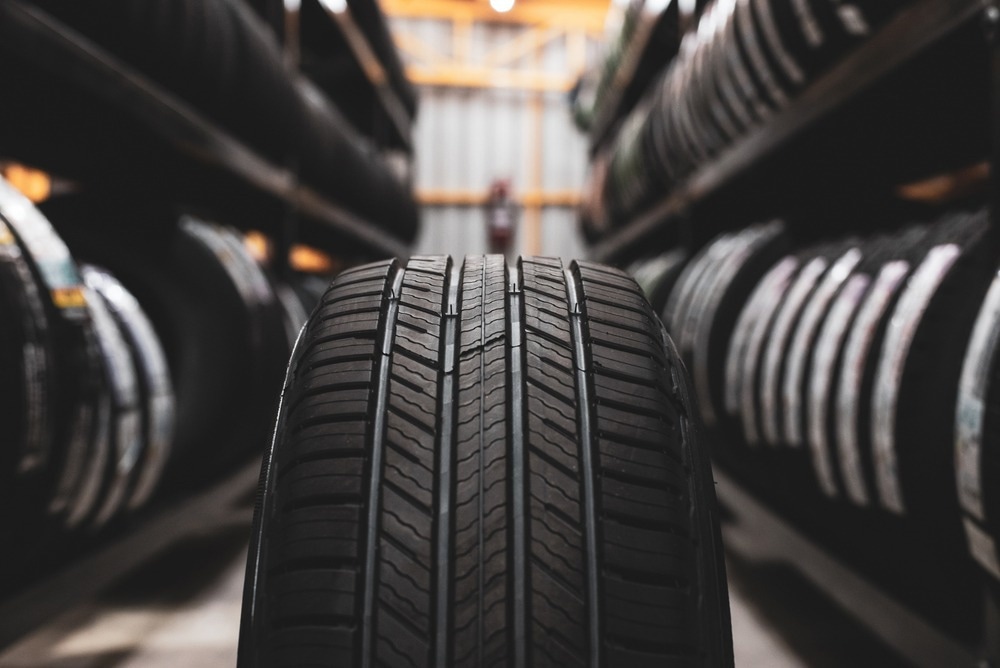A tire pressure monitoring system is composed of a tire pressure sensor, a signal processor, and a transmitter. If low or high pressure is detected, a warning light is illuminated. In some vehicle systems, the tire pressure sensor is located on the rim opposite the tire’s valve stem.
Road vehicle tires are affected by many factors, and it is important that operational adjustment parameters such as tire pressure and temperature are monitored to ensure the moving vehicle’s safety and optimal fuel efficiency. Tire width and tire deflection are also monitored regularly to support tire performance.
Manufacturers incorporate a number of different tire pressure sensors into road vehicles. One such sensor is a piezoresistive pressure sensor, which works by detecting the degree of air pressure in a vehicle tire and converting it into an electrical signal to inform the driver when pressure is too low or high.
Tire Pressure System – Operation
During operation, as the wheel rotates in a relative position to the axle, the sensor measures the pressure inside the tire and uses low frequency radio waves to send a signal to the vehicle’s ECU. Antennas mounted on the wheel and brake caliper act alongside a signal decoder as an interface system.
With most tire pressure monitoring systems, a sensor is mounted onto the top of a valve stem, transmitting the RF signal. The RF changes accordingly if the vehicle tire deflates.
A receiver mounted under the vehicle’s dashboard receives the tire pressure signal. If the pressure drops under 25 PSI (172 Kpa) the warning light activates. In many tire pressure monitoring systems, the sensor is not activated until the vehicle is traveling at 25 mph (40 Km/h.)
The tire pressure sensor is attached to a valve stem via a retention nut. A grommet seals the join between nut and wheel rim.
Valve Stem
The main purpose of the valve stem is to behave as an RF antenna, with the tire pressure module functioning as the receiving unit. RF signals are transmitted in sixty-second intervals by the sensor.
The module receives the tire pressure RF data and compares it to the low tire pressure limits. A discrepancy in the measurement data results in this module transmitting a voltage signal via data links to the message center, which is followed by a warning message to the driver.

Image Credit: Chonlatee42/Shutterstock.com
Types of Tire Pressure Monitoring Systems
Two types of tire pressure monitoring systems (TPMS) are available on the market. These are direct and indirect TPMS. These can either be installed during manufacture or as an aftermarket addition when the vehicle is put to use.
Replacement sensors are generally divided into three categories: direct replacement, programmable, and multi-protocol.
Indirect systems utilize the anti-lock braking system’s wheel speed signals. The signals are interpreted by control algorithms to determine the air pressure in each of the four wheels.
A direct TPMS works via air pressure sensors in each tire, providing real-time readings. Direct measurements require accuracy and are highly complex. Therefore, a direct TPMS only communicates with one tire at a time to achieve optimal measurement efficiency and accuracy.
Smart Tire Pressure Sensors
The automobile industry is undergoing a technological revolution in many areas, with innovative solutions currently in development. Next generation tire pressure sensors are being developed, which include enhanced “smart” functionalities.
Aside from monitoring tire pressure, next generation smart sensors can monitor and detect changes in temperature and provide predictive maintenance capabilities, warning drivers before damage occurs.
The benefits of these sensors include minimized wear and tear, reduced maintenance costs, improved sustainability, better comfort, enhanced safety such as less risk of hydroplaning, and maximized fuel efficiency.
In Summary
A tire pressure sensor is essential to ensure optimal performance, safety, and fuel efficiency in a vehicle. Tire pressure data is wirelessly transmitted to the vehicle’s onboard monitoring system, informing the driver of any potentially dangerous changes.
With smart, integrated functionality becoming more commonplace in the automotive industry, technologies such as tire pressure sensors are becoming increasingly sophisticated, offering predictive maintenance capabilities that enhance drivers' performance, safety, and comfort.
References and Further Reading
Continental Tires (2023) The tire of the future has smart sensors [online] continental-tires.com. Available at: https://www.continental-tires.com/ca/en/b2c/stories/tire-monitoring-system.html
Sensorland (website) Vehicle Tyre Pressure Monitoring [online] sensorland.com. Available at: https://www.sensorland.com/HowPage040.html
Drago V (2023) What is a tire pressure sensor (TPMS) and how does it work? [online] carphrases.com. Available at: https://carphrases.com/tire-pressure-sensor/
Disclaimer: The views expressed here are those of the author expressed in their private capacity and do not necessarily represent the views of AZoM.com Limited T/A AZoNetwork the owner and operator of this website. This disclaimer forms part of the Terms and conditions of use of this website.